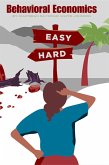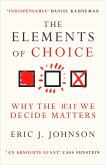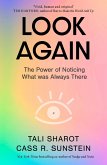Summary of Nudge Decision Architecture includes putting together any setting in which individuals decide. Urinals, flights of stairs, morning timers, school cafeterias, retirement accounts-these can be made more effective and helpful for wellbeing and prosperity. However no plan can be perfect, decision designers are constantly confronted with tradeoffs and should settle on a choice or the like. Hence the question isn't just whether to approach participating in decision engineering, however how to do it best. Libertarian Paternalism is the response to this standardizing question. Maybe then pick arbitrarily between various potential structures, or try to follow people's previous inclinations as intently as could be expected, the creators advocate for a type of paternalism whereby decision engineering should endeavor to make individuals best off in light of everything ("to make their lives longer, better, and better"). In any case, they additionally perceive free decision to be of major significance, thus they demand that decision engineering should be as freedom saving as could be expected. The net outcome is a "generally powerless, delicate, and nonintrusive sort of paternalism" that won't restrict or fundamentally trouble individuals from practicing their freedom of thought. Pokes give the way to typically adjusting people groups' conduct without precluding any game-plan inside and out or essentially changing their impetus structures. Bumps are minimal expense instruments that alarm, remind, or gently caution individuals by taking advantage of human brain research, consequently forming conduct capably. While old style financial aspects conceptualizes man as totally reasonable ("homo economicus"), prods are made considering proof from social brain science proposing that, in reality, individuals are defective myriadly. Models flourish, however among the most significant is business as usual inclination, which leads individuals to follow default alternatives. Part I of this book spreads out more meticulously the social brain science whereupon the idea of decision engineering rests. Parts II-IV investigate the utilization of this technique in the circles of cash, wellbeing, and opportunity, separately. Part V refutes expected complaints and gives a few of the creators' own suggested prods. Application to Ethical Systems This book applies state of the art experiences from social financial aspects to a few of our most significant political and monetary establishments. It makes an essential commitment to the continuous discussion concerning whether, when, and how we should utilize our developing information on human brain research to expand human prosperity without subverting regard for human opportunity. In only a couple of brief years, it inconceivably affects the way lawmakers and controllers in the United States and abroad ponder their work, and it should be required perusing for anybody keen on the convergence of brain science, financial aspects, and the law. Here is a Preview of What You Will Get: ¿ A Full Book Summary ¿ An Analysis ¿ Fun quizzes ¿ Quiz Answers ¿ Etc. Get a copy of this summary and learn about the book.
Dieser Download kann aus rechtlichen Gründen nur mit Rechnungsadresse in A, B, BG, CY, CZ, D, DK, EW, E, FIN, F, GR, HR, H, IRL, I, LT, L, LR, M, NL, PL, P, R, S, SLO, SK ausgeliefert werden.









